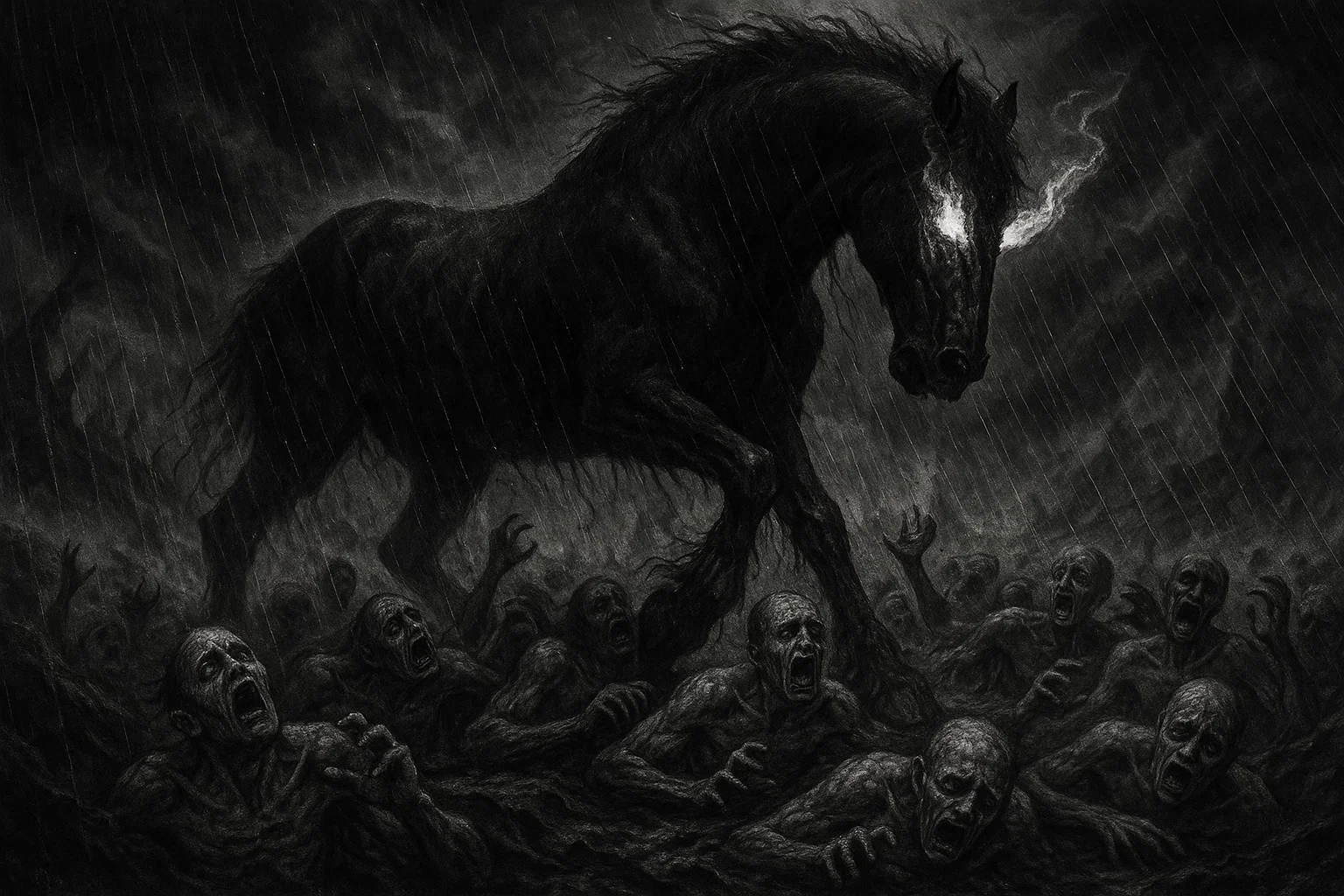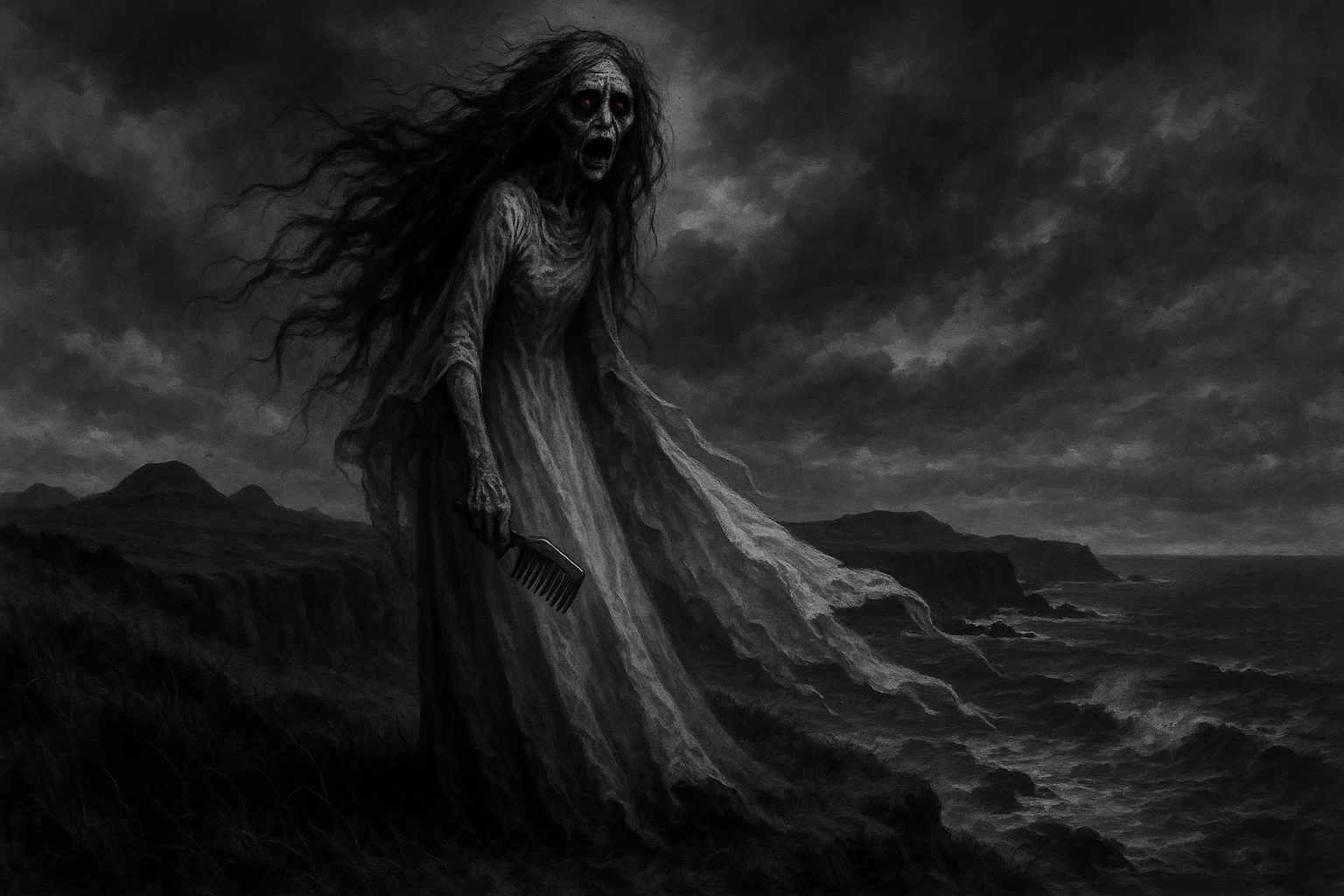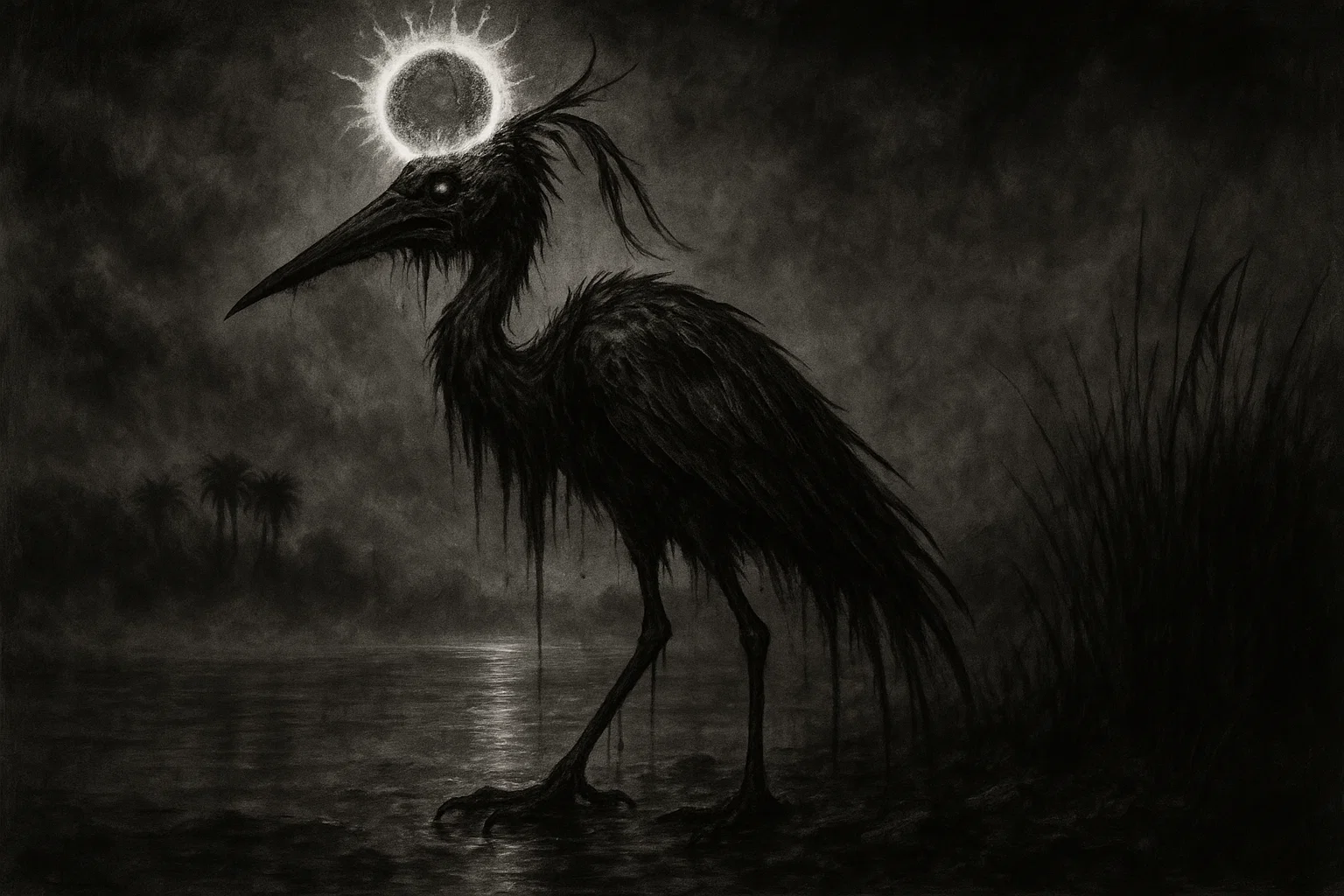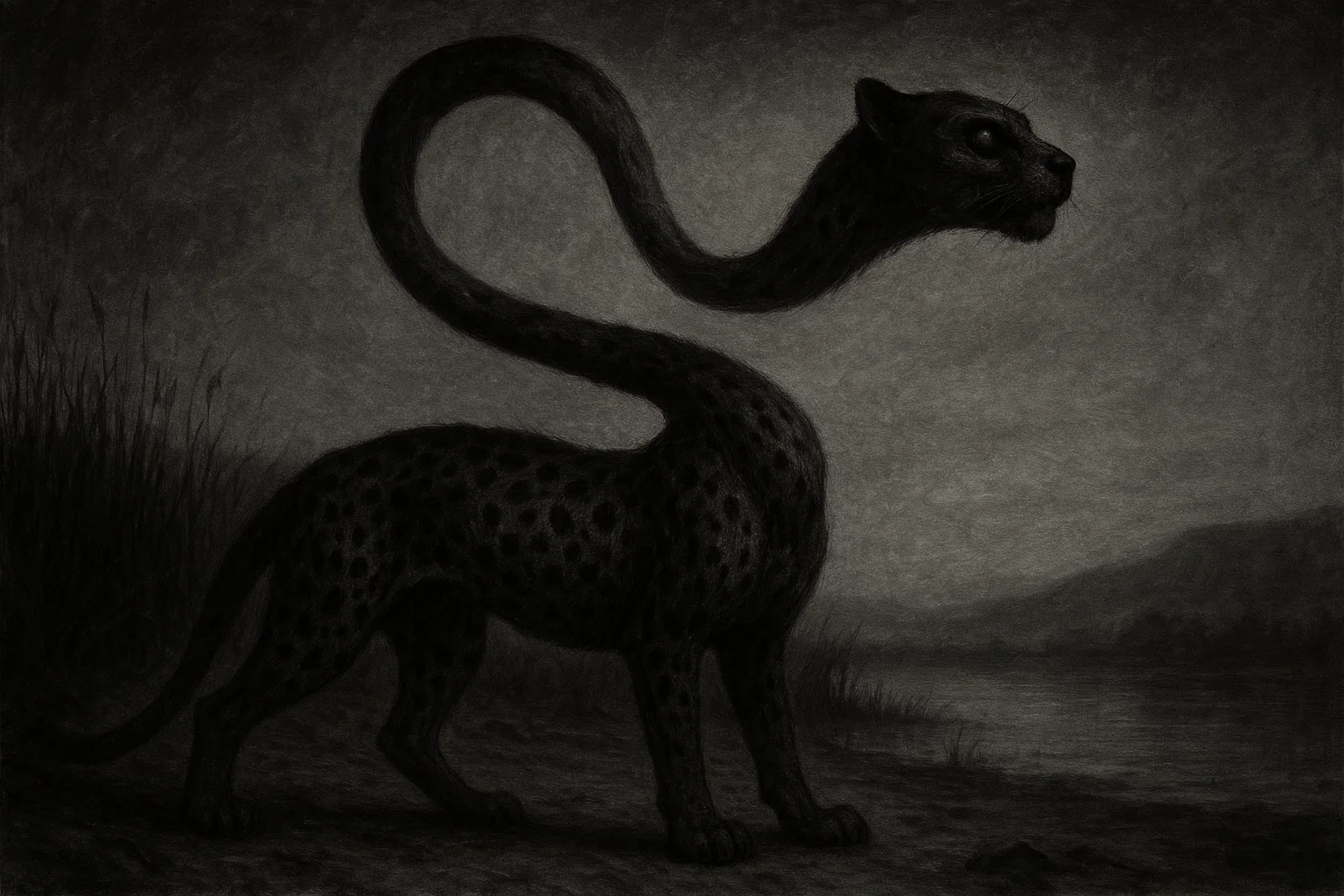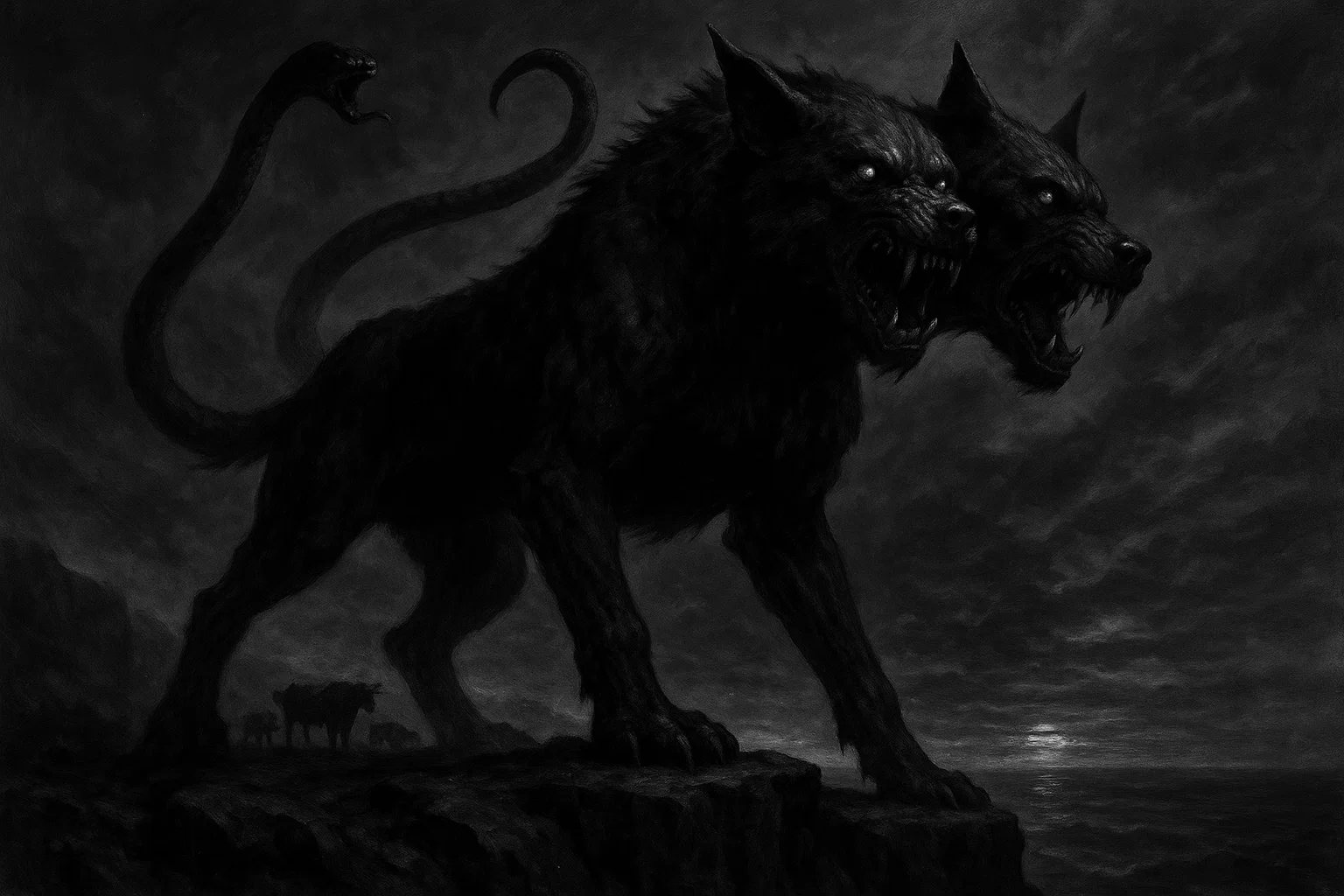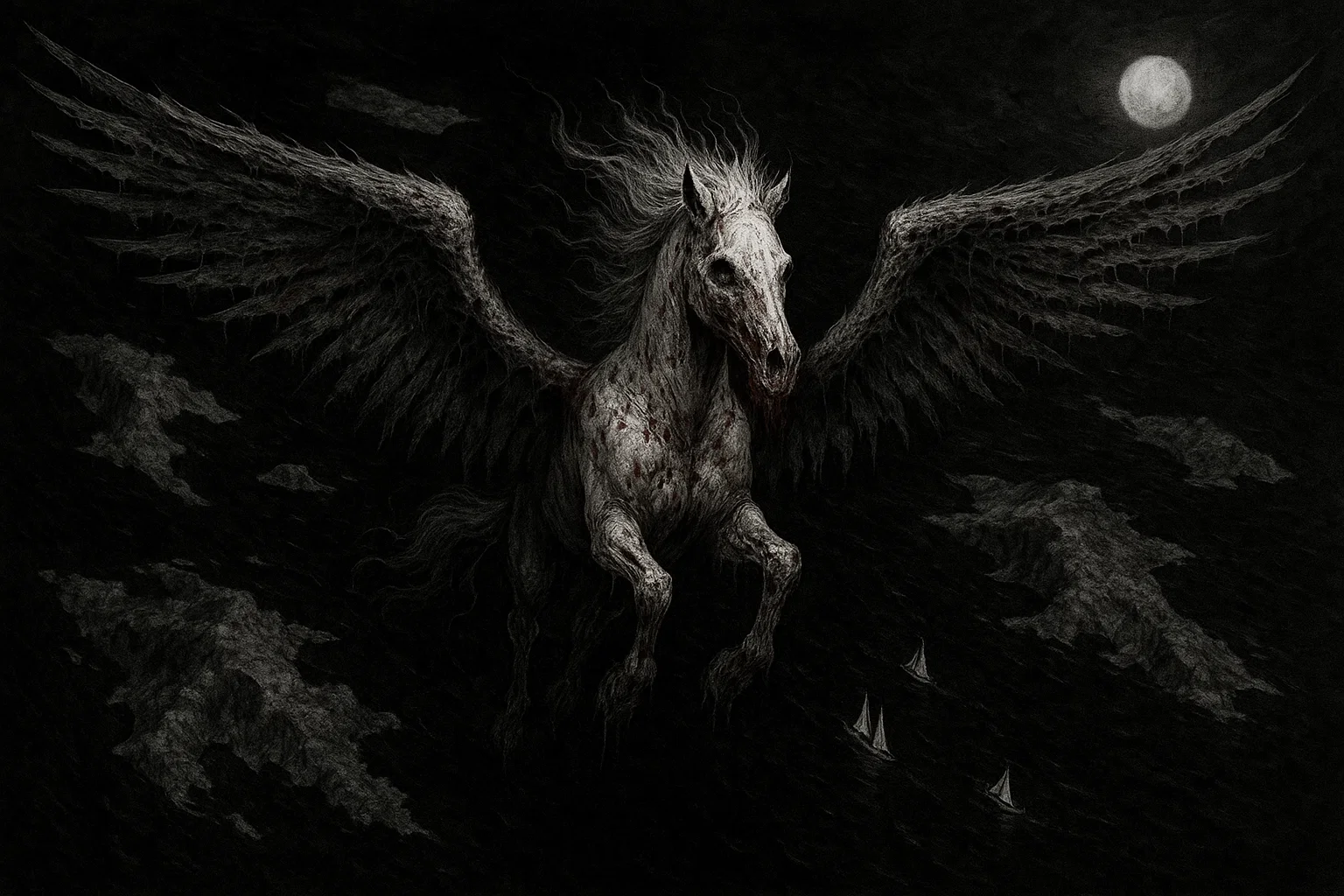In the shadowy realm of demonology, Orobas, a formidable Great Prince of Hell, reigns as the 55th spirit in the Ars Goetia, a cryptic text within the Lesser Key of Solomon. Commanding twenty legions of spirits, this enigmatic entity is famed for his unyielding honesty, fierce protection, and ability to sway hearts and minds.
Dive into a tale of occult intrigue as we unravel Orobas’s ancient origins, unearth his mystical powers, and explore his enduring role in the infernal hierarchy.
Summary
Key Information
Here’s a table with key facts about Orobas:
| Category | Details |
|---|---|
| Name | Orobas, Orobos |
| Title | Great Prince of Hell |
| Gender | Male |
| Role | Grants truthful answers, protection, social influence |
| Hierarchy | 55th spirit in Ars Goetia, commands 20 legions |
| Servitors | 20 legions of lesser demons (names not specified) |
| Superior Demon | Lucifer |
| Appearance | Brown stallion with fiery eyes; transforms into a man, sometimes with horse’s head, red eyes |
| Etymology | From Latin orobias (incense), Greek orobos (fish), or Hebrew orob (raven) |
| Associated Figures | Lucifer, Mebahaiah (opposing angel), characters in Welcome to Demon School! Iruma-kun, Megami Tensei |
| Weaknesses | Bound by rituals, sigils, divine names |
| Opposing Angel/Saint | Mebahaiah (angel of divine protection) |
| Equipment/Tools | Sigil, ritual circle, incense (sandalwood, frankincense) |
| Pantheon | Goetic demonology, Judeo-Christian tradition |
Etymology
The name Orobas is a tapestry of linguistic and cultural threads, each weaving a deeper understanding of his mystical role in demonology.
Its origins are multifaceted, drawing from Latin, Greek, and Hebrew roots, each offering unique insights into his identity as a Great Prince of Hell.
These etymological connections—spanning incense, fish, and ravens—reflect Orobas’s attributes of purification, adaptability, and prophetic insight, making his name a key to unlocking his significance in occult traditions.
The primary theory suggests Orobas derives from the Latin orobias, referring to a type of incense used in ancient rituals. Incense, such as frankincense, myrrh, or sandalwood, was burned in Greco-Roman and Near Eastern ceremonies to purify sacred spaces and facilitate communication with divine or spiritual entities.
This aligns with Orobas’s role as a truth-teller, as his presence is said to clear confusion and reveal hidden knowledge, much like incense dispels negative energies.
In ancient Rome, incense offerings were essential for invoking divine favor, suggesting that Orobas may require similar ritual preparations, such as burning sandalwood or cedar, to honor his protective and clarifying nature.
Another compelling theory ties Orobas to the Greek orobos, meaning a small fish, possibly a type of anchovy or sardine.
In Mediterranean cultures, fish symbolized abundance, adaptability, and the ability to navigate unseen currents, reflecting Orobas’s swift and precise divination across past, present, and future.
This aquatic imagery may link him to ancient maritime deities, such as the Phoenician god Dagon, associated with fertility and the sea, or Greek Nereus, the “Old Man of the Sea,” known for his prophetic abilities. The fish motif suggests Orobas embodies fluidity and resilience, able to traverse the depths of time and knowledge, offering summoners insights into hidden truths.
A third possibility connects Orobas to the Hebrew orob or oreb, meaning “raven.”
In Semitic traditions, ravens were potent symbols of prophecy, wisdom, and divine communication.
In the Hebrew Bible, ravens delivered food to the prophet Elijah (1 Kings 17:4-6), acting as messengers of divine will. This resonates with Orobas’s ability to provide truthful answers about divinity and creation, positioning him as a cosmic intermediary.
Ravens, with their dark plumage and piercing eyes, also evoke mystery and foresight, mirroring Orobas’s fiery-eyed equine form and his role as a seer.
Additionally, some esoteric scholars propose a less common link to the Aramaic orba, meaning “path” or “way,” suggesting Orobas as a guide through spiritual or temporal journeys. This aligns with his ability to reconcile enemies and grant favor, paving paths to harmony and influence.
The Aramaic root could indicate influences from Mesopotamian or Babylonian traditions, where spirits guided mortals through complex destinies.
Another speculative connection is to the Sanskrit arobhas, meaning “shining” or “radiant,” potentially reflecting his fiery eyes and illuminating truths, though this is less widely accepted due to the geographical distance from Sanskrit-speaking regions.
The multifaceted nature of Orobas’s name suggests a syncretic origin, blending Latin, Greek, Hebrew, and possibly Aramaic influences. During the Middle Ages, Christian demonologists often reinterpreted pagan deities and spirits as demons, integrating diverse cultural elements into texts like the Ars Goetia.
Orobas’s name likely evolved from these traditions, combining the ritual purity of incense, the adaptability of fish, and the prophetic wisdom of ravens. This etymology underscores his role as a bridge between the material and spiritual, offering summoners clarity, protection, and insight.
You May Also Like: Ipos, the Prince of Hell: Fallen Angel or Something Older?
What Does the Demon Orobas Look Like?
Orobas appears as a brown stallion with fiery eyes. This horse form symbolizes strength and freedom. His glowing eyes pierce deception, reflecting his honesty. When commanded, he shifts to a human form, often a dark-haired man or blonde-curled boy.
The Dictionnaire Infernal (1863) depicts him with a horse’s head and red eyes. This hybrid form blends primal power with wisdom. His equine imagery evokes loyalty, while his human shape conveys authority. Orobas’s appearance is both striking and approachable.
Historical and Mythological Background
Orobas, a prominent figure in Judeo-Christian demonology, emerges from the esoteric traditions of the Renaissance, where fascination with the supernatural flourished.
His legacy is anchored in key grimoires that shaped Western occultism, notably the Ars Goetia, a section of the Lesser Key of Solomon, compiled in the 17th century, likely around 1650, by anonymous scholars drawing from earlier medieval texts. As the 55th spirit, Orobas holds the rank of Great Prince of Hell, commanding twenty legions of spirits.
His prominence extends to Johann Weyer’s Pseudomonarchia Daemonum, published in 1577 in Basel, Switzerland, and Jacques Collin de Plancy’s Dictionnaire Infernal, first released in 1818 in Paris, with its iconic illustrations added in the 1863 edition.
These texts, revered by occultists, catalog demons for summoning or study, blending Christian theology with mystical traditions rooted in Jewish, Greek, and medieval European sources.
Orobas embodies the Renaissance’s dual obsession with divine order and forbidden knowledge, reflecting a cultural shift toward exploring the supernatural within a structured hierarchy.
Origins in Judeo-Christian Demonology
The Ars Goetia, part of the broader Lesser Key of Solomon, is a cornerstone of demonological literature, attributed to King Solomon’s legendary wisdom, though its modern form dates to 17th-century Europe.
Compiled during a time of religious upheaval, it lists 72 demons, including Orobas, under a hierarchy mirroring feudal systems. Johann Weyer, a Dutch physician and occultist, wrote Pseudomonarchia Daemonum in 1577, predating the Ars Goetia and listing 69 demons, with Orobas as a great prince.
Weyer’s work, published during the Protestant Reformation, aimed to caution against reckless summoning while cataloging infernal entities. Jacques Collin de Plancy, a French writer, further popularized Orobas in his Dictionnaire Infernal, a comprehensive demonology text that gained fame for its 1863 edition’s vivid illustrations by Louis Le Breton.
These works reflect a historical tension between fear of demons and curiosity about their powers, with Orobas standing out for his benevolence compared to malevolent peers like Asmodeus or Astaroth.
Orobas’s role in these texts suggests a synthesis of earlier traditions. Medieval Europe often demonized pagan deities, transforming them into infernal spirits to align with Christian doctrine.
Orobas’s equine form and truth-telling abilities hint at such origins, possibly rooted in pre-Christian worship. His inclusion in grimoires used by scholars, alchemists, and magicians underscores his importance in occult practices, particularly in England and France, where demonology flourished during the 16th and 17th centuries.
Connections to Ancient Deities
Orobas’s characteristics—his horse-like appearance and prophetic gifts—suggest ties to ancient deities across cultures, likely reframed as a demon during the Christianization of Europe.
His equine form strongly recalls Epona, the Celtic goddess of horses, worshipped in Gaul (modern-day France) from the 1st century BCE. Epona was revered by cavalrymen and travelers, her shrines found in Roman stables and rural communities.
Her protective role mirrors Orobas’s ability to shield summoners, suggesting he may be a demonized version of her cult, adapted into Christian demonology by medieval theologians. Epona’s statues, often depicting her riding a mare, parallel Orobas’s stallion form, symbolizing strength and guardianship.
His divinatory powers evoke Apollo, the Greek god of prophecy, music, and truth, worshipped across the Mediterranean from the 8th century BCE.
Apollo’s oracles at Delphi, active until the 4th century CE, provided truthful guidance, much like Orobas’s ability to reveal past, present, and future. The horse motif also connects to Sleipnir, the eight-legged steed of Odin in Norse mythology, documented in the Poetic Edda (13th century).
Sleipnir, born of Loki’s trickery, symbolized swift travel between realms, akin to Orobas’s time-spanning divination. In Mesopotamian mythology, horse-like spirits served as messengers for gods like Marduk in Babylon (circa 18th century BCE), paralleling Orobas’s role as a truth-bearer.
These connections suggest Orobas evolved from a syncretic blend of Celtic, Greek, and Near Eastern deities, reshaped into a demon by Christian scholars to fit a monotheistic worldview.
Less direct but notable parallels exist with other traditions. In Egyptian mythology, Horus, the falcon-headed god (circa 3000 BCE), was associated with prophecy and protection, traits Orobas shares through his raven-linked etymology and guardianship.
In Hindu mythology, Hayagriva, a horse-headed deity from the Vedas (circa 1500 BCE), embodies wisdom and knowledge, resonating with Orobas’s cosmic insights.
You May Also Like: Who Is Bael (Baal), the First King of Hell?
Legends and Stories
While grimoires like the Ars Goetia focus on Orobas’s powers rather than narrative myths, occult traditions and modern interpretations offer compelling tales that highlight his unique role.
The Peacemaker’s Pact (circa 1580, Florence, Italy)
In late 16th-century Florence, during the Medici family’s reign, a tale recounts a magician named Giovanni Rossi invoking Orobas to resolve a bitter feud between the Strozzi and Pazzi noble families.
The conflict, sparked by a disputed land deal in 1578 over vineyards in Tuscany, threatened violence and destabilized Florence’s political balance. Rossi, a scholar of the occult trained in Bologna, summoned Orobas on September 12, 1580, in a candlelit chamber at the Palazzo Vecchio.
Using a chalk-drawn sigil and burning sandalwood incense, Rossi called forth Orobas, who appeared as a majestic brown stallion with glowing eyes. The demon’s presence calmed the room, and through visions, he revealed the Strozzi’s greed for land and the Pazzi’s pride in their lineage.
Guided by Orobas’s truthful insights, Rossi mediated a meeting on October 5, 1580, where the families agreed to share the land’s profits. Rossi earned favor with Duke Cosimo I de’ Medici, who rewarded him with a position as court advisor.
This story, recorded in a 1582 occult manuscript by Rossi’s apprentice, showcases Orobas’s reconciliation powers, setting him apart from demons like Astaroth, who sow discord.
Keeper of Cosmic Secrets (1650, Oxford, England)
In 1650, during England’s Commonwealth period under Oliver Cromwell, an Oxford scholar named Thomas Hale, a member of the Bodleian Library’s scholarly circle, summoned Orobas to explore the universe’s origins.
On June 3, 1650, in a secluded library chamber, Hale used a parchment sigil and frankincense to invoke Orobas, who appeared as a man with a horse’s head and piercing red eyes. Speaking in a resonant voice, Orobas described creation as a cosmic dance of divine light and infernal shadow, revealing secrets about the interplay of celestial forces.
He spoke of a primal balance forged before time, a truth too vast for Hale’s mind. Overwhelmed, Hale ended the ritual, documenting his fear of divine retribution in a letter dated June 10, 1650, to his colleague, Dr. John Wilkins.
Hale’s journal, preserved in Oxford archives, notes his vow to avoid further summonings, underscoring Orobas’s role as a keeper of profound, almost unbearable cosmic truths.
The Guardian Stallion (1685, Paris, France)
In 1685, during Louis XIV’s reign and the height of the Affair of the Poisons (1677–1682), a French occultist named Marie Dubois faced accusations of witchcraft in Paris.
The scandal, involving poisonings and black magic among the French nobility, made such charges life-threatening. On March 15, 1685, Dubois performed a secret ritual in her Montmartre home, using Orobas’s sigil, drawn in ink, and offerings of barley and horseshoes.
Orobas appeared as a stallion with fiery eyes, his presence dispelling a shadowy aura of malice. He revealed the true culprit—a rival alchemist, Claude Moreau, who spread lies to discredit Dubois. By April 20, 1685, Dubois presented evidence to the Paris courts, clearing her name and exposing Moreau’s deceit.
This tale, recorded in a 1686 occultist’s diary, highlights Orobas’s protective powers, shielding summoners from slander and spiritual threats.
You May Also Like: Photographs from Another World | Horror Story
Historical Mentions
Orobas appears in key demonological texts:
| Text/Grimoire | Description | Excerpt |
|---|---|---|
| Pseudomonarchia Daemonum | Great prince, appears as a horse, then a man. Speaks of divine virtue, gives true answers, grants dignities, protects from deception. Commands 20 legions. | “Orobas is a great prince, he commeth foorth like a horsse… he giveth true answers of things present, past, and to come, and of the divinitie, and of the creation, he deceiveth none, nor suffereth anie to be tempted, he giveth dignities and prelacies, and the favour of freends and foes, and hath rule over twentie legions.” |
| Lesser Key of Solomon (Ars Goetia) | 55th spirit, Great Prince. Appears as a horse, then a man. Reveals truths, grants favor, protects from spirits. Commands 20 legions. | “The Fifty-fifth Spirit is Orobas. He is a great and Mighty Prince, appearing at first like a Horse… His Office is to discover all things Past, Present, and to Come; also to give Dignities, and Prelacies, and the Favour of Friends and of Foes. He giveth True Answers of Divinity, and of the Creation of the World. He is very faithful unto the Exorcist, and will not suffer him to be tempted of any Spirit. He governeth 20 Legions of Spirits.” |
| Dictionnaire Infernal | Great prince, appears as a horse or man. Answers time-based questions, exposes lies, grants positions, reconciles enemies. Commands 20 legions. | “Orobas, grand prince du sombre empire. On le voit sous la forme d’un beau cheval. Quand il paraît sous la figure d’un homme, il parle de l’essence divine. Consulté, il donne des réponses sur le passé, le présent et l’avenir. Il découvre le mensonge, accorde des dignités et des emplois, réconcilie les ennemis, et a sous ses ordres vingt légions.” |
Orobas Powers and Abilities
Orobas, a Great Prince of Hell, wields a unique arsenal of powers that set him apart in the infernal hierarchy.
Unlike many demons who thrive on chaos, destruction, or base temptations like lust or greed, Orobas’s abilities center on manipulation through truth, influence, and subtle corruption.
His powers, while seemingly benevolent, carry a sinister edge, luring summoners into pride, overconfidence, or dangerous dependence on his dark gifts.
Divination with a Malevolent Edge
Orobas excels at revealing truths about the past, present, and future, but his divination is not a neutral gift. He peers into the fabric of time, unveiling secrets with unsettling precision.
A merchant might summon Orobas to predict market trends, receiving chillingly accurate forecasts that lead to immense wealth—but at the cost of growing arrogance or paranoia.
Unlike generic demonic foresight, which often deceives, Orobas’s predictions are true, making them more dangerous. His honesty binds summoners to him, fostering reliance on his infernal insight.
For example, a 17th-century occultist might have used Orobas to foresee a rival’s betrayal, only to become obsessed with controlling fate, a subtle trap that erodes free will.
Cosmic Knowledge to Unravel Faith
Orobas offers profound insights into divinity and the creation of the world, a power rare among demons. While many Goetic spirits provide superficial knowledge, Orobas delves into metaphysical truths, explaining the universe’s origins or the nature of divine forces.
Mystics might seek him to understand cosmic balance, but his revelations often twist faith into doubt. For instance, a scholar summoning Orobas in 1650 might learn of creation’s infernal underpinnings, shaking their belief in divine goodness.
This knowledge, while accurate, plants seeds of spiritual corruption, aligning summoners with hell’s perspective. Unlike Astaroth, who seduces with false secrets, Orobas uses truth to destabilize, making his power uniquely insidious.
Social Influence Through Infernal Favor
Orobas grants dignities (social status) and prelacies (high-ranking positions), manipulating human hierarchies with ease. A politician invoking him might gain favor from allies and enemies alike, rising to power swiftly.
However, this influence comes with a cost: recipients often become prideful, attributing success to their own merit rather than Orobas’s intervention. Unlike Asmodeus, who incites lust to ruin relationships, Orobas’s social manipulation is subtle, fostering vanity and ambition.
In a historical tale, a nobleman reportedly used Orobas to secure a royal appointment in 1580, only to become consumed by hubris, alienating allies. This power targets the ego, a hallmark of Orobas’s demonic strategy.
You May Also Like: The Eery Story of Edward Mordrake | Horror Story
Protection as a Binding Pact
Orobas shields summoners from evil spirits and slander, a rare protective role among demons. If falsely accused, a summoner might call on Orobas to deflect gossip, ensuring their reputation remains intact.
Unlike generic demonic protection, which often demands sacrifice, Orobas’s safeguarding seems selfless but binds summoners to his will. For example, an occultist in 1600s France might have invoked Orobas to ward off rival sorcerers’ curses, only to find themselves indebted to him, compelled to perform further rituals.
This protection, while effective, lures summoners into deeper infernal alliances, a subtle form of corruption.
Reconciliation to Manipulate Bonds
Orobas can mend conflicts, turning foes into allies, a power that contrasts with demons like Andras, who sow discord. A summoner resolving a family feud might call on Orobas, who orchestrates peace through supernatural persuasion.
However, this reconciliation serves his agenda, often creating alliances loyal to his influence. In a legend, Orobas helped a 16th-century magician unite warring nobles, but the resulting peace led to a power bloc under the summoner’s control, driven by pride. This ability manipulates human relationships, aligning them with infernal goals.
Temptation Through Truth and Power
Unlike demons like Asmodeus (lust) or Belial (deceit), Orobas tempts through truth and influence. His powers—divination, cosmic knowledge, social favor—appeal to pride and ambition.
A summoner gaining wealth or status through Orobas may grow arrogant, believing they control their fate. His protection and reconciliation create dependence, binding summoners to his will. This subtle corruption, masked as benevolence, makes Orobas uniquely dangerous.
His practical powers address real-world challenges, but they lead summoners down a path of spiritual compromise, aligning them with hell’s agenda.
Orobas’s abilities, while appearing beneficial, are distinctly demonic. They exploit human desires for knowledge, power, and security, offering gifts that erode autonomy.
His truth-telling, unlike generic demonic deception, is a tool of manipulation, making him a formidable figure in the Goetic tradition.
Orobas’ Role in the Hierarchy of Hell
Orobas, a Great Prince of Hell, holds a prestigious rank in the infernal hierarchy, commanding twenty legions of spirits. Each legion, numbering thousands, underscores his authority in the demonic realm.
In the Ars Goetia’s feudal-like structure, hell mirrors a medieval court. Lucifer reigns as emperor, followed by kings, princes, dukes, marquises, earls, knights, and presidents. Princes like Orobas govern significant domains, wielding power over vast spiritual armies and specific infernal duties.
His domain likely centers on truth and protection, reflecting his unique role as a guardian of cosmic secrets and a shield against deception. Picture a towering citadel, carved from dark stone, where Orobas presides over archives of hidden knowledge, a fortress where truth is both weapon and treasure.
His role extends beyond mere command. Orobas acts as a trusted lieutenant, ensuring his summoners receive accurate guidance and safety. His loyalty and refusal to deceive set him apart in a realm often marked by treachery.
This makes him a pivotal figure in hell’s political landscape, balancing power with integrity. His Saturnian influence, tied to discipline and structure, suggests he maintains order within his domain, enforcing strict loyalty among his legions.
Armies and Subordinates
Orobas’s twenty legions form a disciplined force, each legion comprising thousands of lesser demons. These spirits are likely specialized in tasks aligned with his powers: divination, protection, and reconciliation.
While grimoires like the Ars Goetia don’t name specific subordinates, they may include entities skilled in gathering secrets, shielding summoners from spiritual attacks, or mediating conflicts.
These legions operate with precision, reflecting Orobas’s orderly nature. Their tasks include executing his commands, such as delivering truthful answers or protecting ritual spaces. This army’s loyalty ensures Orobas’s influence is both widespread and effective, making his domain a hub of infernal intelligence.
Superior Demons
Orobas serves directly under Lucifer, the supreme ruler of hell, often depicted as the emperor in Goetic lore. Lucifer’s authority is absolute, overseeing all demonic ranks.
Above Orobas, kings like Bael, Paimon, and Beleth hold higher status, commanding larger legions (200, 200, and 85, respectively) and broader domains. Bael grants invisibility, Paimon teaches all arts, and Beleth incites love, each wielding powers that outshine Orobas’s focused abilities.
Despite this, Orobas’s loyalty to Lucifer ensures his reliability. His role as a prince places him in a strategic position, executing Lucifer’s will while maintaining autonomy over his legions. This dynamic suggests a close, trusted relationship with the infernal emperor, with Orobas acting as a dependable advisor in matters of truth and protection.
You May Also Like: Is The Anguished Man Painting Truly Cursed?
Allied Demons
Orobas forms alliances with demons sharing his intellectual and diplomatic traits. Stolas, another Great Prince, teaches astronomy and herbology, complementing Orobas’s divinatory skills. Their shared focus on knowledge likely fosters collaboration, perhaps in deciphering cosmic mysteries.
Seere, a prince known for swiftness and truth, mirrors Orobas’s honesty and speed, making him a natural ally in rapid information-gathering tasks. Gremory, a duke who procures love and reveals truths, shares Orobas’s diplomatic nature, aiding in reconciliation efforts.
These alliances create a network of intellectual and harmonious demons, working together to fulfill complex summoner requests, such as resolving disputes or uncovering hidden knowledge.
Their cooperation strengthens Orobas’s influence, allowing him to navigate hell’s politics with finesse.
Adversary Demons
Orobas’s nature put him at odds with demons of deception and chaos. Asmodeus, a king who incites lust and revenge, clashes with Orobas’s focus on harmony and honesty. Asmodeus’s manipulative tactics contrast sharply with Orobas’s refusal to deceive.
Similarly, Astaroth, a Great Duke who seduces and spreads falsehoods, opposes Orobas’s lie-detecting abilities. Their conflicting agendas likely spark rivalries, with Orobas thwarting their schemes by exposing their deceptions.
Lesser demons like Shax, who steals and deceives, may also resent Orobas’s protective barriers.
Astrological Associations and Symbolism
Orobas’s astrological ties enhance his ritual significance:
| Category | Details |
|---|---|
| Planet | Saturn (discipline), Mercury (communication) |
| Metal | Tin (Saturn), quicksilver (Mercury) |
| Element | Earth (stability), Air (swiftness) |
| Astrological Sign | Virgo (truth), Capricorn (protection), Gemini (Mercury) |
| Day | Saturday (Saturn), Wednesday (Mercury) |
| Number | 3 (collaboration), 7 (mysticism) |
| Color | Black, dark blue, grey (Saturn); brown, green, yellow (Virgo); silver (Mercury) |
| Crystals | Citrine (clarity), turquoise (protection), carnelian (confidence), amethyst (intuition) |
| Offerings | Sandalwood, frankincense, pine cones, barley, wheat, copper coins, horseshoes, hay, chestnuts, coffee, chocolate, divination tools, pentacles |
| Zodiac | Virgo, Capricorn, Gemini |
| Symbol | Horse, raven, incense burner |
Orobas Sigil
The sigil of Orobas is a geometric seal in the Ars Goetia. It channels his energy and binds him to the summoner’s will. Drawn in a ritual circle with incense, it ensures safe communication. Its intricate lines reflect his authority and truth-telling. The sigil is a vital tool for evocation.
You May Also Like: Is Busby’s Stoop Chair Curse Really Deadly?
Comparison with Other Demons
| Demon | Title | Appearance |
|---|---|---|
| Paimon | King | Man with woman’s face on dromedary |
| Astaroth | Great Duke | Angel with viper’s tail on dragon |
| Asmodeus | King | Three-headed (bull, ram, man) |
| Beleth | King | King on pale horse with trumpets |
| Purson | Great King | Lion-headed man on bear |
| Gremory | Duke | Woman on camel |
| Vine | King and Earl | Lion on black horse with viper |
| Bifrons | Earl | Monster or man |
| Vapula | Duke | Lion with griffin wings |
Conclusion
Orobas, a formidable Great Prince of Hell, commands twenty legions under Lucifer in the infernal hierarchy. Far from a beacon of virtue, this demon wields his powers to entice and manipulate, offering forbidden knowledge and influence to those daring enough to summon him.
His ties to Saturn, Mercury, and Virgo amplify his ritual potency, making him a seductive force in occult practices.
From ancient grimoires like the Ars Goetia to modern depictions in Welcome to Demon School! Iruma-kun and Megami Tensei, Orobas captivates with his promise of power, luring summoners with the allure of control and secrets.
As a master of deception cloaked in reliability, Orobas embodies the dangerous allure of the infernal, drawing mortals into the shadowy depths of demonology with calculated precision.

